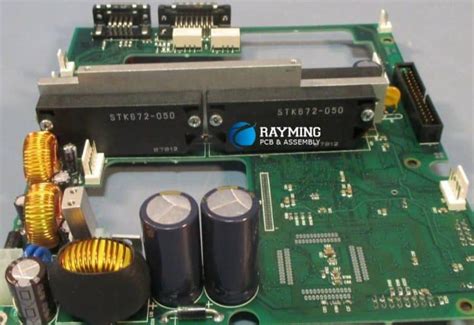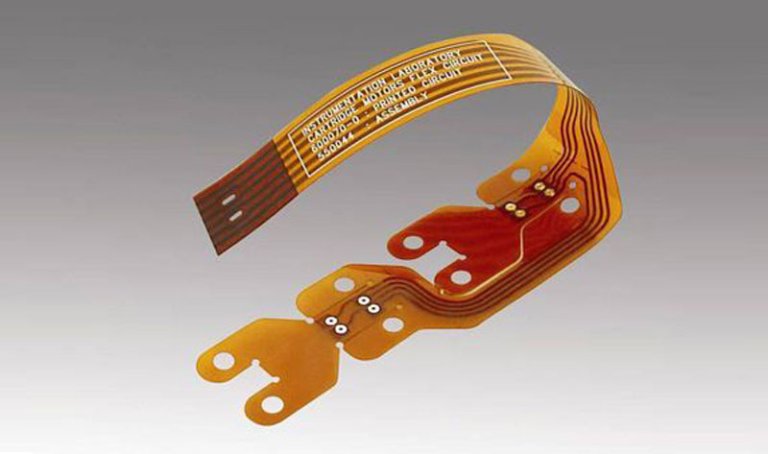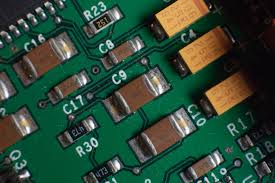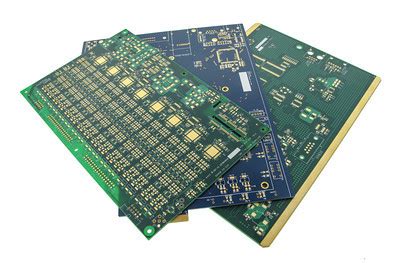Conformal coating flex pcb
Benefits Of Conformal Coating For Flex PCBs
Conformal coating is an essential process in the manufacturing and protection of flexible printed circuit boards (flex PCBs), offering a multitude of benefits that enhance the performance and longevity of these critical components. As electronic devices become increasingly compact and complex, the demand for flex PCBs has surged, necessitating advanced protective measures to ensure their reliability. Conformal coatings, which are thin polymeric films applied to the surface of PCBs, serve as a robust barrier against environmental and operational hazards, thereby playing a crucial role in safeguarding the functionality of flex PCBs.
One of the primary benefits of conformal coating for flex PCBs is its ability to provide excellent protection against moisture and humidity.
Flex PCBs are often used in environments where exposure to moisture is inevitable, such as in automotive, aerospace, and consumer electronics applications. The conformal coating acts as a sealant, preventing moisture from penetrating the circuit board and causing corrosion or electrical failures. This moisture resistance is particularly important in applications where reliability is paramount, as it helps to maintain the integrity of the electrical connections and components over time.
In addition to moisture protection, conformal coatings offer significant resistance to chemical exposure.
Flex PCBs may come into contact with various chemicals during their lifecycle, including cleaning agents, fuels, and lubricants. The application of a conformal coating creates a chemical barrier that prevents these substances from degrading the materials and components of the PCB. This chemical resistance extends the operational life of the flex PCB and ensures consistent performance even in harsh chemical environments.
Furthermore, conformal coatings provide mechanical protection to flex PCBs, which are inherently more susceptible to physical damage due to their flexible nature.
The coating adds a layer of durability, protecting the circuit board from abrasion, vibration, and mechanical stress. This is particularly beneficial in applications where the PCB is subject to frequent movement or bending, as the coating helps to prevent cracks and breaks in the circuitry. By enhancing the mechanical resilience of flex PCBs, conformal coatings contribute to the overall reliability and durability of electronic devices.
Thermal management is another critical aspect where conformal coatings offer advantages.
Flex PCBs are often used in applications with varying temperature ranges, and the coating helps to manage thermal expansion and contraction. By providing a uniform layer over the PCB, the conformal coating aids in dissipating heat and reducing thermal stress on the components. This thermal stability is essential for maintaining the performance and efficiency of electronic devices, particularly in high-temperature environments.
Moreover, conformal coatings can improve the electrical insulation properties of flex PCBs.
By covering the conductive traces and components, the coating minimizes the risk of short circuits and electrical arcing. This is especially important in densely packed electronic assemblies where the proximity of conductive elements can lead to unintended electrical interactions. The enhanced insulation provided by conformal coatings ensures that the flex PCB operates safely and efficiently, reducing the likelihood of electrical failures.
In conclusion, the application of conformal coating to flex PCBs offers a comprehensive range of benefits that enhance their performance, reliability, and longevity. By providing protection against moisture, chemicals, mechanical stress, thermal fluctuations, and electrical interference, conformal coatings play a vital role in ensuring the optimal functionality of flex PCBs across various industries. As technology continues to advance, the importance of conformal coatings in the production and maintenance of flex PCBs will undoubtedly remain a critical factor in the success of modern electronic devices.
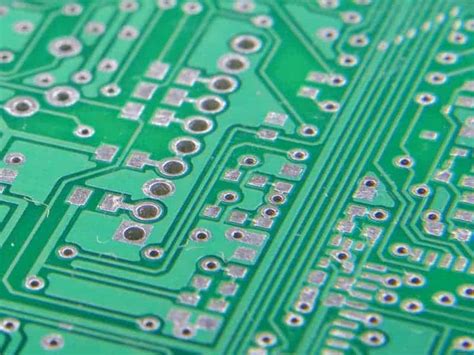
Types Of Conformal Coatings Used In Flex PCB Applications
In the realm of flexible printed circuit boards (flex PCBs), conformal coatings play a crucial role in ensuring the reliability and longevity of electronic assemblies. These coatings are essential for protecting the delicate circuitry from environmental factors such as moisture, dust, chemicals, and temperature fluctuations. As the demand for more compact and flexible electronic devices continues to grow, understanding the types of conformal coatings used in flex PCB applications becomes increasingly important.
One of the most commonly used conformal coatings in flex PCB applications is acrylic.
Acrylic coatings are favored for their ease of application and removal, making them an attractive option for many manufacturers. They provide excellent moisture resistance and good dielectric properties, which are essential for maintaining the integrity of the circuit. Furthermore, acrylic coatings are known for their transparency, allowing for easy inspection of the underlying components. However, they may not offer the same level of chemical resistance as other types, which can be a consideration depending on the specific application.
In contrast, silicone conformal coatings are renowned for their flexibility and high-temperature resistance, making them particularly suitable for flex PCBs that are subjected to extreme environmental conditions.
Silicone coatings can withstand a wide range of temperatures, from as low as -65°C to as high as 200°C, without losing their protective properties. This makes them ideal for applications where thermal cycling is a concern. Additionally, silicone coatings provide excellent moisture and chemical resistance, although they can be more challenging to remove compared to acrylics.
Polyurethane coatings offer a balance between flexibility and chemical resistance, making them another popular choice for flex PCB applications.
These coatings provide robust protection against abrasion and solvents, which is crucial in environments where mechanical stress and exposure to harsh chemicals are prevalent. Polyurethane coatings also exhibit good dielectric properties, ensuring that the electrical performance of the circuit is not compromised. However, like silicone, they can be more difficult to remove, which may impact reworkability.
Epoxy conformal coatings are known for their superior hardness and chemical resistance, making them suitable for applications where mechanical protection is paramount.
These coatings form a rigid barrier that can withstand significant physical stress, providing excellent protection against abrasion and impact. However, the rigidity of epoxy coatings can be a disadvantage in flex PCB applications, where flexibility is often required. Additionally, epoxy coatings can be challenging to remove, which can complicate repair and rework processes.
Each type of conformal coating offers distinct advantages and limitations, and the choice of coating often depends on the specific requirements of the application.
Factors such as environmental conditions, mechanical stress, and the need for reworkability must be carefully considered when selecting a conformal coating for flex PCBs. As technology continues to advance, new formulations and application methods are being developed to enhance the performance and versatility of conformal coatings. These innovations aim to address the evolving needs of the electronics industry, ensuring that flex PCBs remain reliable and efficient in a wide range of applications.
In conclusion, the selection of conformal coatings for flex PCB applications is a critical decision that impacts the performance and durability of electronic devices.
By understanding the properties and benefits of different types of coatings, manufacturers can make informed choices that align with their specific needs and operational environments. As the industry progresses, ongoing research and development will continue to refine these coatings, offering even greater protection and functionality for the next generation of flexible electronics.

Best Practices For Applying Conformal Coating On Flex PCBs
When it comes to the application of conformal coatings on flexible printed circuit boards (flex PCBs), adhering to best practices is crucial to ensure optimal performance and longevity. Flex PCBs, known for their ability to bend and twist, are increasingly used in various industries, including aerospace, automotive, and consumer electronics. These applications often expose the circuits to harsh environments, making conformal coatings essential for protection against moisture, dust, chemicals, and temperature extremes. Therefore, understanding the nuances of applying these coatings is vital for maintaining the integrity and functionality of the circuits.
To begin with, selecting the appropriate type of conformal coating is a fundamental step.
The choice largely depends on the specific environmental conditions the flex PCB will encounter. Common types of conformal coatings include acrylics, silicones, polyurethanes, and epoxies, each offering distinct properties. For instance, silicone coatings are highly flexible and can withstand significant temperature variations, making them suitable for applications where thermal cycling is a concern. On the other hand, acrylic coatings are easier to apply and rework, providing a good balance of protection and cost-effectiveness. Thus, evaluating the operational environment and performance requirements is essential in making an informed decision.
Once the appropriate coating is selected, surface preparation becomes the next critical step.
Proper cleaning of the flex PCB is necessary to remove any contaminants such as oils, dust, or residues that could hinder the adhesion of the coating. Techniques such as solvent cleaning, plasma cleaning, or ultrasonic cleaning are commonly employed to achieve a pristine surface. Ensuring that the board is completely dry before applying the coating is equally important, as moisture can lead to poor adhesion and potential failure of the protective layer.
The application process itself requires precision and control.
Techniques such as brushing, spraying, dipping, or automated selective coating can be used, each with its own advantages and limitations. For instance, spraying allows for uniform coverage and is suitable for high-volume production, while brushing may be more appropriate for small-scale applications or touch-ups. Regardless of the method chosen, maintaining a consistent thickness is crucial to ensure adequate protection without compromising the flexibility of the PCB. Typically, a thickness of 25 to 75 micrometers is recommended, but this can vary based on the specific requirements of the application.
Furthermore, curing the conformal coating is a step that should not be overlooked.
Proper curing ensures that the coating achieves its full protective properties. Depending on the type of coating used, curing can be achieved through air drying, heat curing, or UV curing. Each method has its own set of parameters that must be carefully controlled to avoid issues such as incomplete curing or thermal damage to the flex PCB.
Finally, inspection and testing are indispensable to verify the quality and effectiveness of the conformal coating.
Visual inspection can help identify defects such as bubbles, voids, or uneven coverage. Additionally, electrical testing can confirm that the coating does not interfere with the circuit’s functionality. By adhering to these best practices, manufacturers can ensure that their flex PCBs are well-protected and capable of performing reliably in demanding environments. Through careful selection, preparation, application, and verification, the application of conformal coatings on flex PCBs can be optimized to meet the rigorous demands of modern electronic applications.

Challenges And Solutions In Conformal Coating Flex PCBs
Conformal coating of flexible printed circuit boards (flex PCBs) presents a unique set of challenges and solutions that are critical to ensuring the reliability and performance of electronic devices. As electronic devices become increasingly compact and complex, the demand for flex PCBs has surged due to their ability to bend and conform to various shapes, making them ideal for applications where space is limited. However, the very nature of flex PCBs introduces complexities in the conformal coating process, which is essential for protecting the circuits from environmental factors such as moisture, dust, and chemicals.
One of the primary challenges in conformal coating flex PCBs is the inherent flexibility of the substrate.
Unlike rigid PCBs, flex PCBs can bend and twist, which can lead to cracking or delamination of the coating if not applied correctly. This necessitates the use of coatings that possess both flexibility and durability. Silicone-based coatings are often preferred for flex PCBs due to their excellent elasticity and ability to withstand mechanical stress. However, selecting the appropriate coating material is only part of the solution. The application process must also be carefully controlled to ensure uniform coverage without compromising the board’s flexibility.
Another significant challenge is achieving adequate adhesion of the coating to the flex PCB surface.
The materials used in flex PCBs, such as polyimide, can be difficult for coatings to adhere to, especially when the surface is contaminated with residues from manufacturing processes. To address this, thorough cleaning and surface preparation are crucial steps. Techniques such as plasma treatment or chemical etching can enhance surface energy, promoting better adhesion of the coating. Additionally, the use of adhesion promoters or primers can further improve the bond between the coating and the substrate.
The complexity of flex PCB designs also poses challenges in the conformal coating process.
Flex PCBs often feature intricate geometries, including fine pitch components and densely packed traces, which can make it difficult to achieve complete and uniform coverage. Automated selective coating systems equipped with precision nozzles and advanced software can be employed to apply coatings with high accuracy, ensuring that even the most complex areas are adequately protected. Moreover, these systems can be programmed to avoid coating sensitive areas such as connectors and test points, which must remain free of coating for functionality and testing purposes.
Thermal management is another critical consideration when conformal coating flex PCBs.
The coating process often involves curing at elevated temperatures, which can affect the mechanical properties of the flex PCB and the components mounted on it. To mitigate this, low-temperature curing coatings or UV-curable coatings can be used, minimizing thermal stress on the board. Furthermore, it is essential to ensure that the coating does not impede the board’s ability to dissipate heat, as this could lead to overheating and potential failure of the electronic device.
In conclusion, while conformal coating flex PCBs presents several challenges, these can be effectively addressed through careful selection of coating materials, meticulous surface preparation, advanced application techniques, and consideration of thermal management. By overcoming these challenges, manufacturers can enhance the reliability and longevity of flex PCBs, ensuring that they continue to meet the demands of modern electronic applications. As technology advances, ongoing research and development in conformal coating materials and processes will undoubtedly lead to even more robust solutions for protecting flex PCBs in the future.

Innovations In Conformal Coating Technologies For Flex PCBs
In recent years, the electronics industry has witnessed significant advancements in the development of flexible printed circuit boards (flex PCBs), which have become integral to a wide range of applications, from consumer electronics to aerospace technologies. As these applications often demand high reliability and durability, the need for effective protective measures has become increasingly important.
One such measure is the application of conformal coatings, which serve to protect flex PCBs from environmental factors such as moisture, dust, chemicals, and temperature fluctuations. Innovations in conformal coating technologies have thus become a focal point for researchers and manufacturers aiming to enhance the performance and longevity of flex PCBs.
Conformal coatings are thin polymeric films that conform to the contours of a printed circuit board, providing a protective barrier without significantly adding to the weight or altering the flexibility of the board.
Traditionally, these coatings have been applied using methods such as dip coating, spray coating, and brush coating. However, as the complexity and miniaturization of electronic components have increased, these conventional methods have faced challenges in ensuring uniform coverage and avoiding issues such as bubbles, voids, and uneven thickness. Consequently, recent innovations have focused on improving application techniques and developing advanced materials that address these challenges.
One notable advancement in conformal coating technologies is the adoption of selective coating processes, which utilize precision dispensing systems to apply coatings only to specific areas of the flex PCB.
This method not only reduces material waste but also minimizes the risk of coating-sensitive components, such as connectors and switches, which could be adversely affected by the coating material. Moreover, selective coating processes can be automated, enhancing production efficiency and consistency.
In addition to application techniques, the development of new coating materials has been a significant area of innovation.
Traditional conformal coatings, such as acrylics, silicones, and polyurethanes, have been widely used due to their ease of application and cost-effectiveness. However, these materials often fall short in providing the necessary protection against harsh environmental conditions. To address this, researchers have been exploring advanced materials such as parylene, a vapor-deposited polymer that offers superior barrier properties and chemical resistance. Although parylene coatings are more expensive and require specialized equipment for application, their benefits in terms of performance and reliability make them an attractive option for critical applications.
Furthermore, the integration of nanotechnology into conformal coatings has opened new avenues for enhancing the protective capabilities of these materials.
Nanocoatings, which incorporate nanoparticles into the polymer matrix, can provide improved mechanical strength, thermal stability, and resistance to abrasion and corrosion. These properties are particularly beneficial for flex PCBs used in demanding environments, such as automotive and aerospace applications, where exposure to extreme conditions is common.
As the demand for more robust and reliable flex PCBs continues to grow, the importance of conformal coating technologies cannot be overstated.
The ongoing innovations in both application techniques and material development are poised to play a crucial role in meeting the evolving needs of the electronics industry. By ensuring that flex PCBs are adequately protected against environmental stressors, these advancements not only enhance the performance and longevity of electronic devices but also contribute to the overall sustainability of electronic products by reducing the need for frequent repairs and replacements. As such, the future of conformal coating technologies for flex PCBs holds great promise, with continued research and development expected to yield even more sophisticated solutions.

